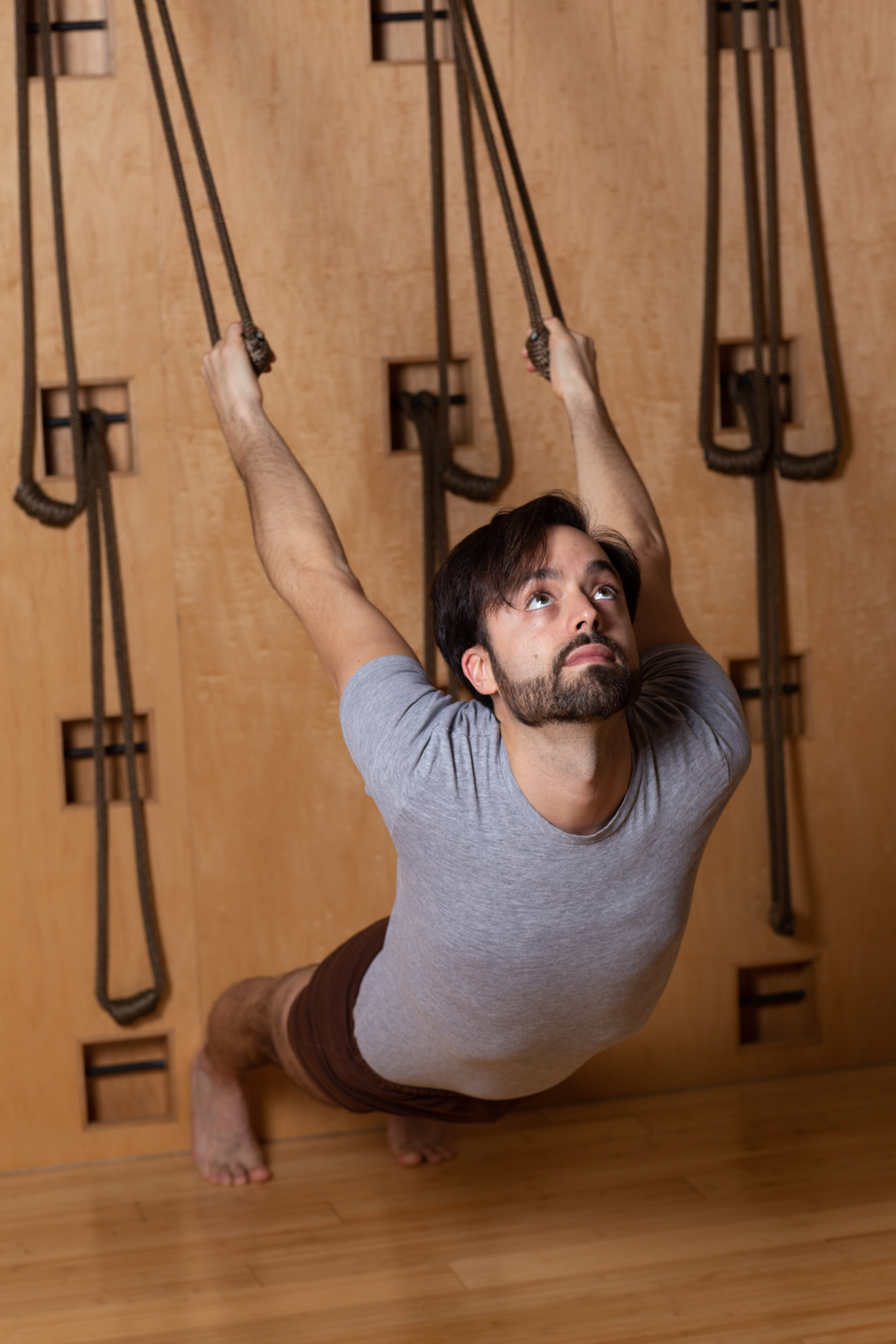WHERE IT COMES FROM
The Iyengar method is based on the teachings of yoga master Bellur Krishnamachar Sundaraja, better known as B.K.S. Iyengar. His work on the field derives from a lifetime of study and practice of the classical system of yoga presented in “The Yoga Sutras of Patañjali”, a text with 2,500 years worth of history. Today, his method is practiced across the globe, with more than 180 official associations in 40 countries. Teacher candidates are required to train and study for several years before they can apply for assessment: a rigorous examination process to become certified.
In class, teachers perform clear demonstrations on how to do the poses and link the philosophical contents of yoga with the dynamics of practice. The sequences are intelligently designed to move from the fundamentals towards the more subtle and complex aspects of the subject. A fine example of this is the order in which the poses are taught. Beginner classes start with the standing postures to bring attention to the very base of the human body: the feet. Just like a building requires a stable foundation to be constructed so does the human body require steady feet to ascend and expand.
Each category of asanas (poses) brings about varying effects to be observed. For example, forward bending poses are cooling and calming for the brain while backbends create heat and stimulate the body. Students are taught to stay mentally present and identify the effects of the poses as they move through the sequence. This develops their capacity to focus and direct their attention, which is one of the many meanings of the word “yoga”.
The Iyengar method is an invaluable tool to foster physical health, mental clarity, emotional stability and spiritual awareness.
MR. IYENGAR
B.K.S. Iyengar practiced and taught yoga for 80 years with astonishing mastery until his passing. During the 60’s and 70’s he pioneered in the West, spreading the knowledge of the yoga tradition through his classes and the publication of his acclaimed book “Light on Yoga”. His profound and expansive literature has become essential for any yoga educator. He introduced the use of props we commonly see in most studios: rope walls, blocks, straps, back-less chairs, etc. Determined to pass the light of yoga to the world, Mr. Iyengar developed an elaborate system of certification for new teachers. His staple was Excellency. I leave you with two of his many celebrated quotes:
"It is through the alignment of the body that I discovered the alignment of my mind, self, and intelligence."
"Yoga does not just change the way we see things, it transform the person who sees..”
